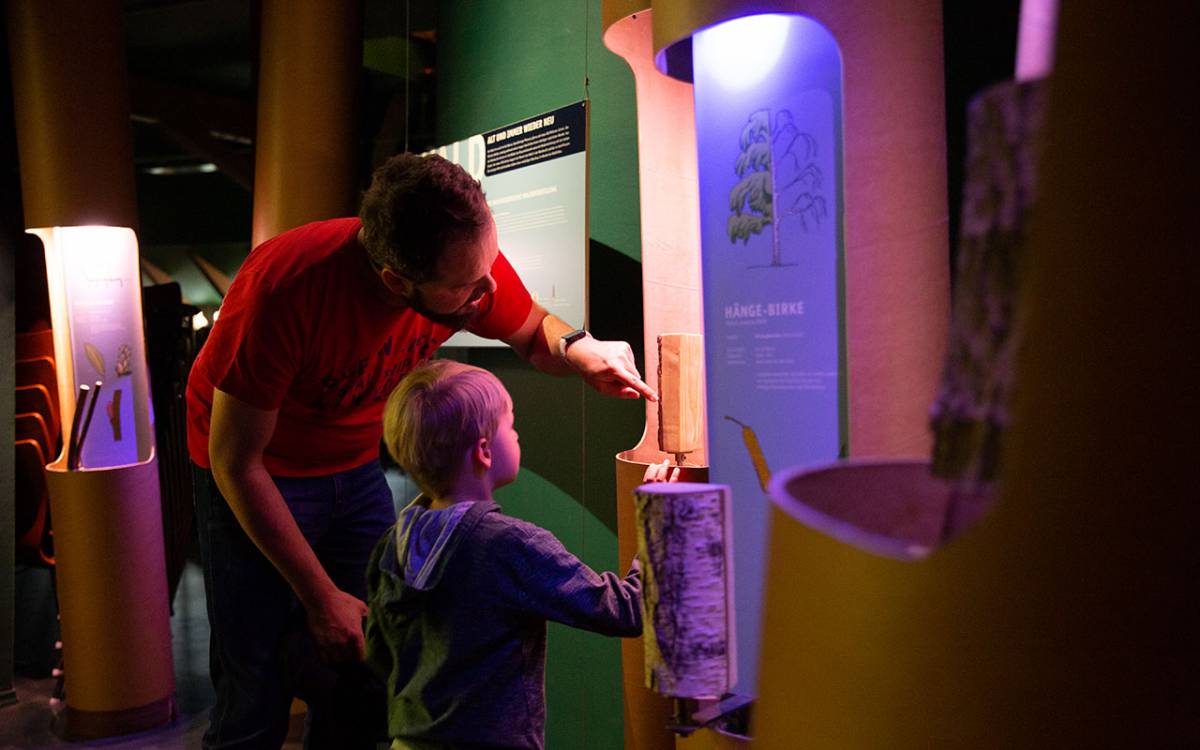The permanent collection in the Elementarium: Theme-based world of the forest
A forest is as old as the trees growing in it. It is in a constant state of flux. From West Lusatia we are familiar with the forests of the brown coal period and how forests developed after the last Ice Age. Step into the forest ecosystem, wander through the stages of the post-glacial development of the forest and take a look back at what forests were like in the Tertiary period some 17 million years ago.

Kiwis, figs, passion flowers, palm trees, magnolias, pomegranates, sequoias - all once grew here in Lusatia? Yes - a humid warm climate 17 million years ago made it possible for laurel forests and warm temperate rainforests to flourish and support a great diversity of species. What is more, our region was covered by large swamp forests, from which Lusatia’s extensive lignite deposits were formed.
Natural forests develop in stages. It starts off with pioneer tree species that do not live very long, but offer protection to the species of trees that follow them. These species grow more slowly and can live to an advanced age. The different stages of forest development can occur in parallel over a large area or can be more closely interlinked in a smaller area.
Wood grouse are symbolic of intact forests. Populations of black grouse, capercaillie and hazel grouse are directly linked to an area of undisturbed forest that includes the different stages of development. Wood grouse are becoming increasingly rare in Saxony’s forests and are now deemed to be critically endangered or have already become extinct - a clear indication that there is a lack of natural forest.
In the old-growth stage of a forest, diseased, dying or dead trees form their own ecosystems comprising many species of their own. About 1,000 Central European beetle species thrive in and on wood or wood-dwelling fungi. Today, many of these species are endangered because there is almost no deadwood left in commercially managed forests.







